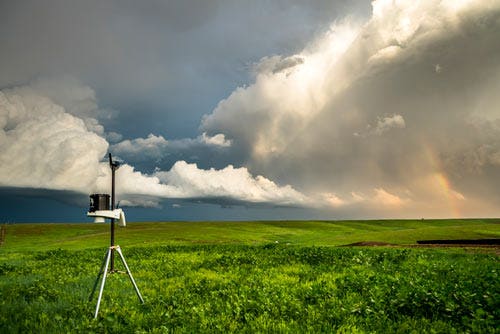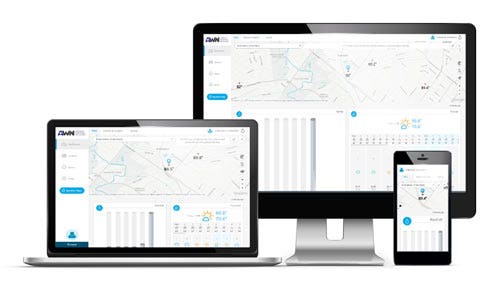The Guide to Common Terms for Tracking Weather
When it comes to tracking the weather, there are numerous devices on the market to get the job done. Some of the most common devices and measurement tools come in the form of a psychrometer, hygrometer, and anemometer.
Let's cover the basics of common terms for weather measurement instruments and comprehensive weather monitoring solutions available.
What is a Hygrometer?
Hygrometers are weather instruments used to measure humidity in the air. Hygrometers can be simple or complex devices depending on the type of instrument that you choose. This device is used for measuring humidity for weather, but they also offer other benefits while being used in industries such as HVAC or greenhouses.

Typically, any environment that has a concern about humidity levels will use a hygrometer. They can also be used in homes for people with respiratory problems or issues with high humidity.
Two types of popular hygrometers include mechanical and dry bulb. The hygrometer uses two mercury thermometers with one wet bulb and one dry bulb.
With a mechanical hygrometer, it works by using an organic material such as a piece of hair. This allows it to predict the humidity in the air.
What is a Psychrometer?
A psychrometer is a device that is used to measure the amount of relative humidity that is present in the air. It is a simpler type of hygrometer.
Psychrometers measure the relative humidity in the air with two different readings:
- Via a dry bulb thermometer that measures temperature by exposing it to the air.
- Via a wet bulb thermometer which is dipped in a liquid.
Together these readings allow a psychrometer to calculate the relative humidity in the air. While it sounds complex, this is a simple reading that the device outputs.
What is an Anemometer?
An anemometer is an instrument that measures wind speed. It does this by counting the number of rotations of a wheel. These devices are strong enough to measure anything between a gentle breeze and tornado wind speeds. Keep in mind that tornadoes can be stronger and more intense than hurricanes, with some wind speeds reaching as high as 300 mph.

Getting all Weather Measurements in One Device
Portable weather Monitoring vs Automated Weather Stations
When you want more capabilities for weather tracking, Kestrel Instruments offer an array of weather-tracking tools and weather stations for measuring and monitoring environmental conditions.
Kestrel meters and data loggers are compact, rugged, portable devices that measure a range of elements, including but not limited to:
- Temperature
- Relative humidity
- Wind speed
- Wind Direction
- Wind chill
- Barometric pressure
- Dew point
- Heat stress index
- Wet Bulb Globe Temperature
Having a Kestrel weather meter or logger provides you with real-time accurate weather data. Best of all, the free Kestrel LiNK app allows you to view, manage, and share your weather data from your phone or tablet. The LiNK app works with any Bluetooth-enabled Kestrel unit. All Kestrel meters and loggers are rugged, waterproof, drop-tested, and compact, making them ideal for any type of weather watching activity or outdoor adventure.
The KestrelMet 6000 Weather Station
A weather station is a collection of instruments that measure meterological conditions at a given site. Weather stations are used to help study the weather and patterns of a specific location. The KestrelMet 6000 weather station is a robust, accurate, all-in-one weather monitoring solution. The KestrelMet measures:
- Barometric pressure
- Temperature
- Relative Humidity
- Wind speed
- Wind direction
- Rainfall
- Solar irradiance
- Optional Sensors
- Soil Temperature
- Soil moisture
- Leaf wetness
The optional sensors are helpful in monitoring soil and crop conditions for making informed agricultural decisions. The KestrelMet 6000 AG weather station comes with the agricultural sensors for a complete monitoring solution.

Remote Data Viewing
Viewing your KestrelMet 6000 weather station data is easier than ever. The KestrelMet station monitors weather conditions and sends sensor data directly to the cloud. View your current measurements and access historical data, charts, and more on the Ambient Weather Network (AWN) online dashboard or app.






